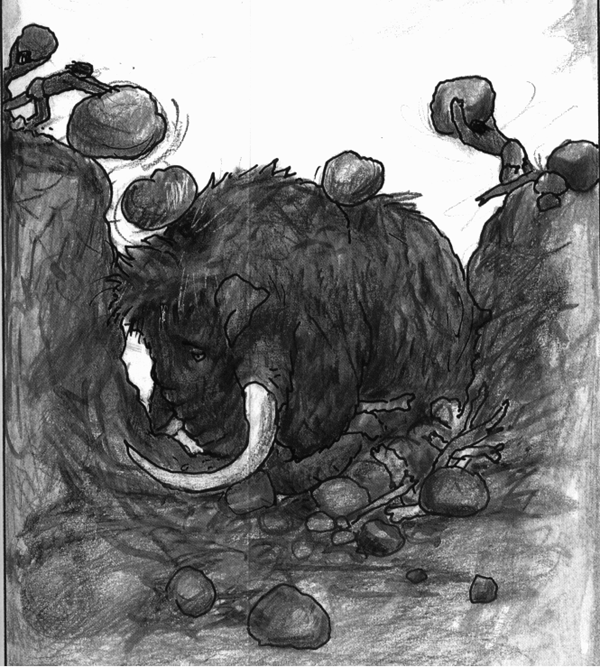It is thought that paleohunters used natural features of the landscape to help them bring down their prey. This picture is an example of how a natural pit in the ground is used to trap the prey, in this case a Woolly mammoth. Paleohunters could drive their quarry with fire over the edge of cliffs or down gullies, in which the trapped animals could be butchered with little danger.
However, some scientists have painted an overly grim and gluttonous picture of the mammoth hunter. Often depicted as a greedy mass killer, the paleohunter bands were probably numerically quite small, in the manner of nomadic hunter-gatherer tribes. Each small group would require, at the most, one or two mammoths per year to fulfill all of their various needs. The amount of meat which could be taken off of one mammoth would have been sufficient by itself to feed a family for an entire long glacial winter. Mass death assemblages, often attributeed to paleohunters, may not in actuality be the remains of animals killed at the same time, but instead may be an accumulation of kills over time, or in many cases, these mass death assemblages can be attributed to natural events such as flash floods or sites of group starvation.
To our credit, as humans, the mammoth bone shelters depicted previously need not necessarily have been made entirely from mammoth bones taken from animals which human hunters had killed. Ancient hunters probably took bones from naturally dead mammoths and incorporated these bones into their house structures. Natural mass death assemblages, for example, would have served the same purpose that lumber yards do today.
